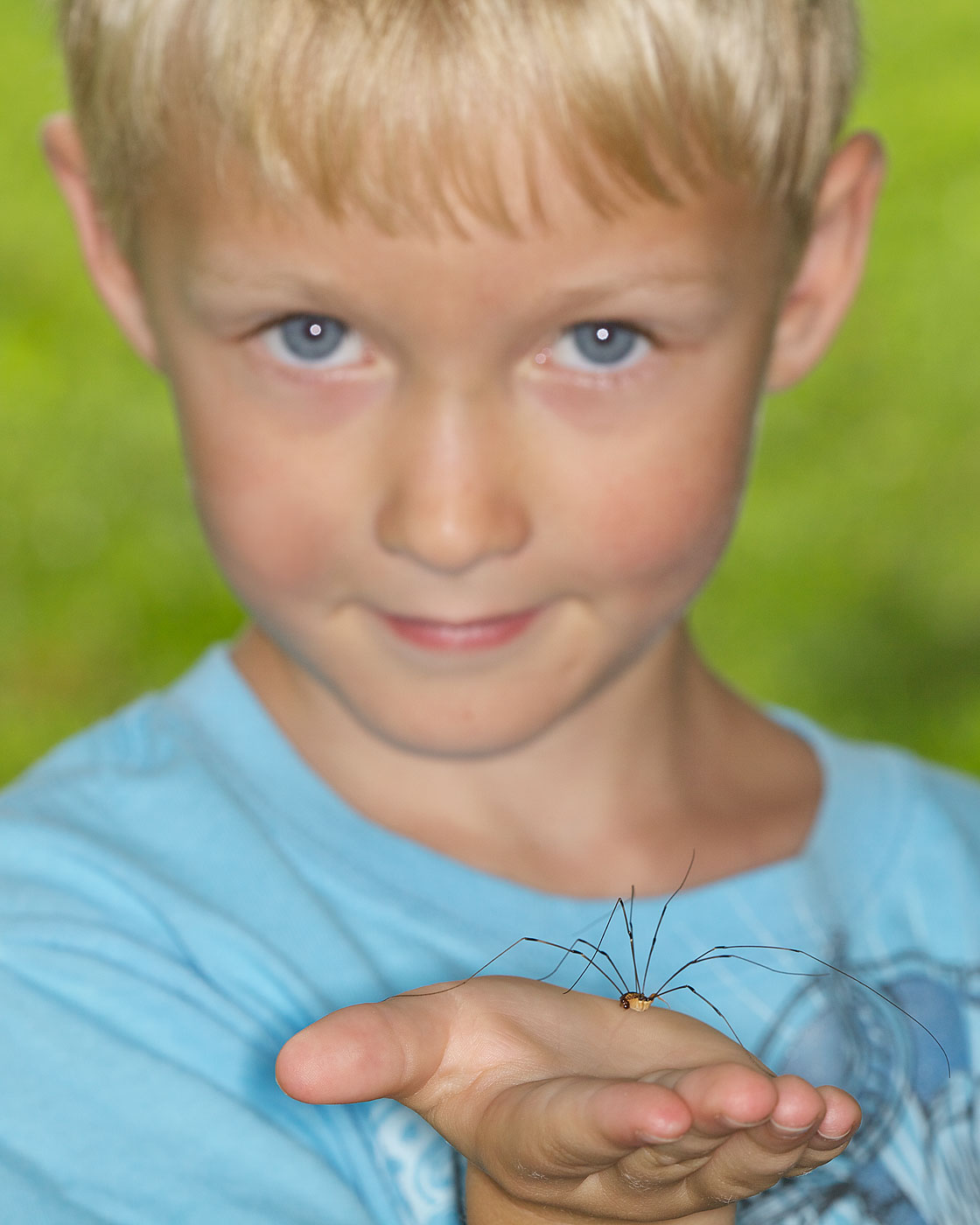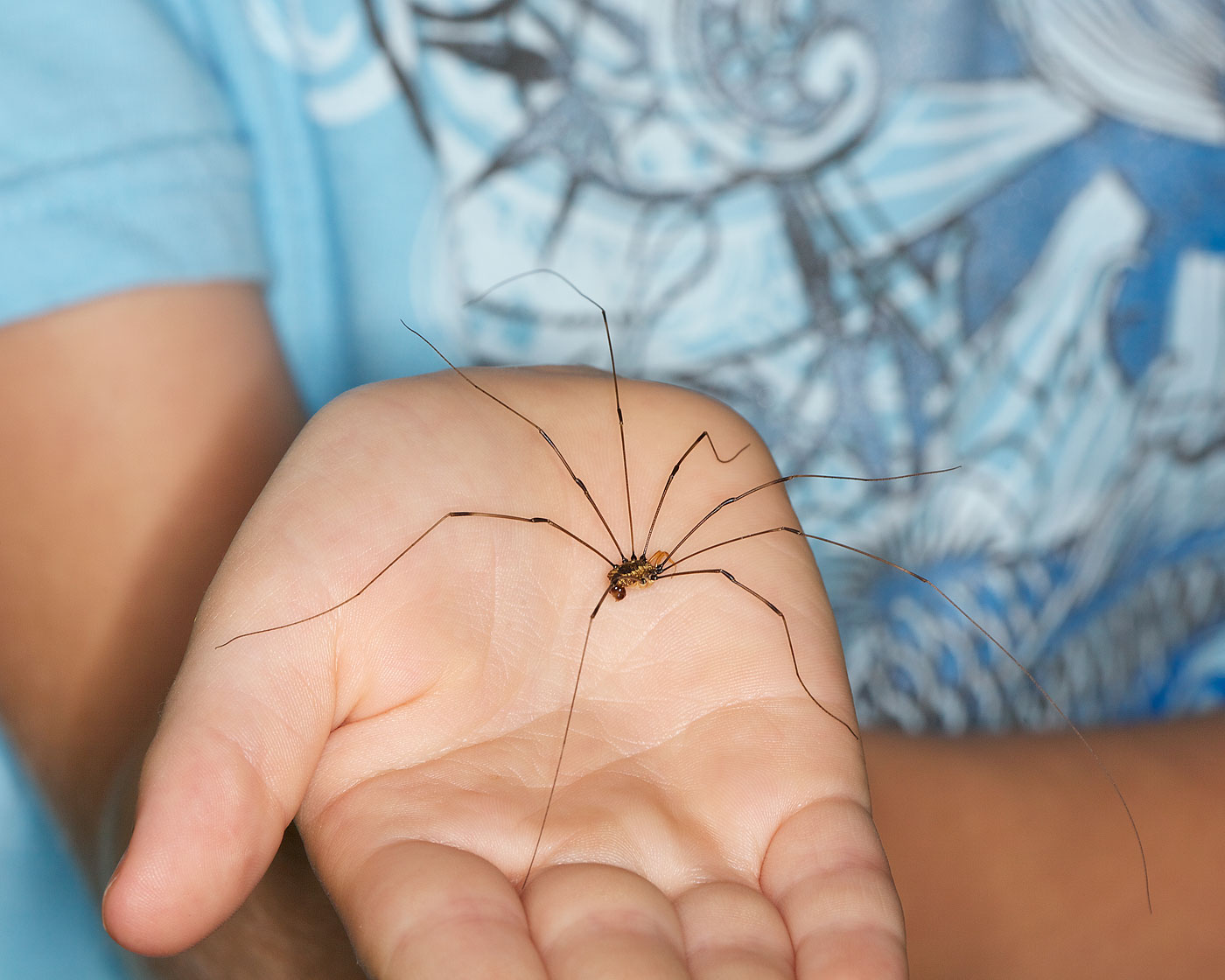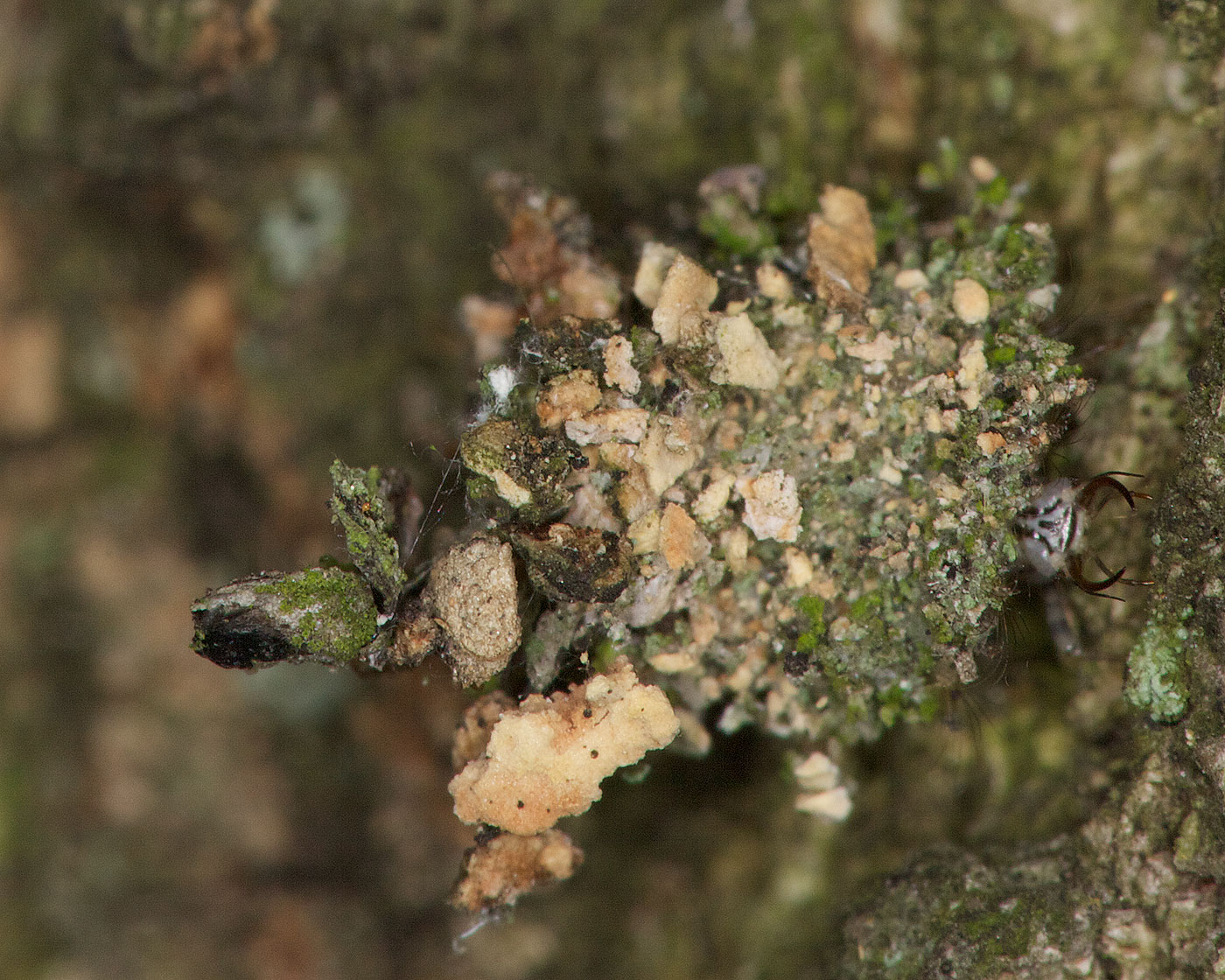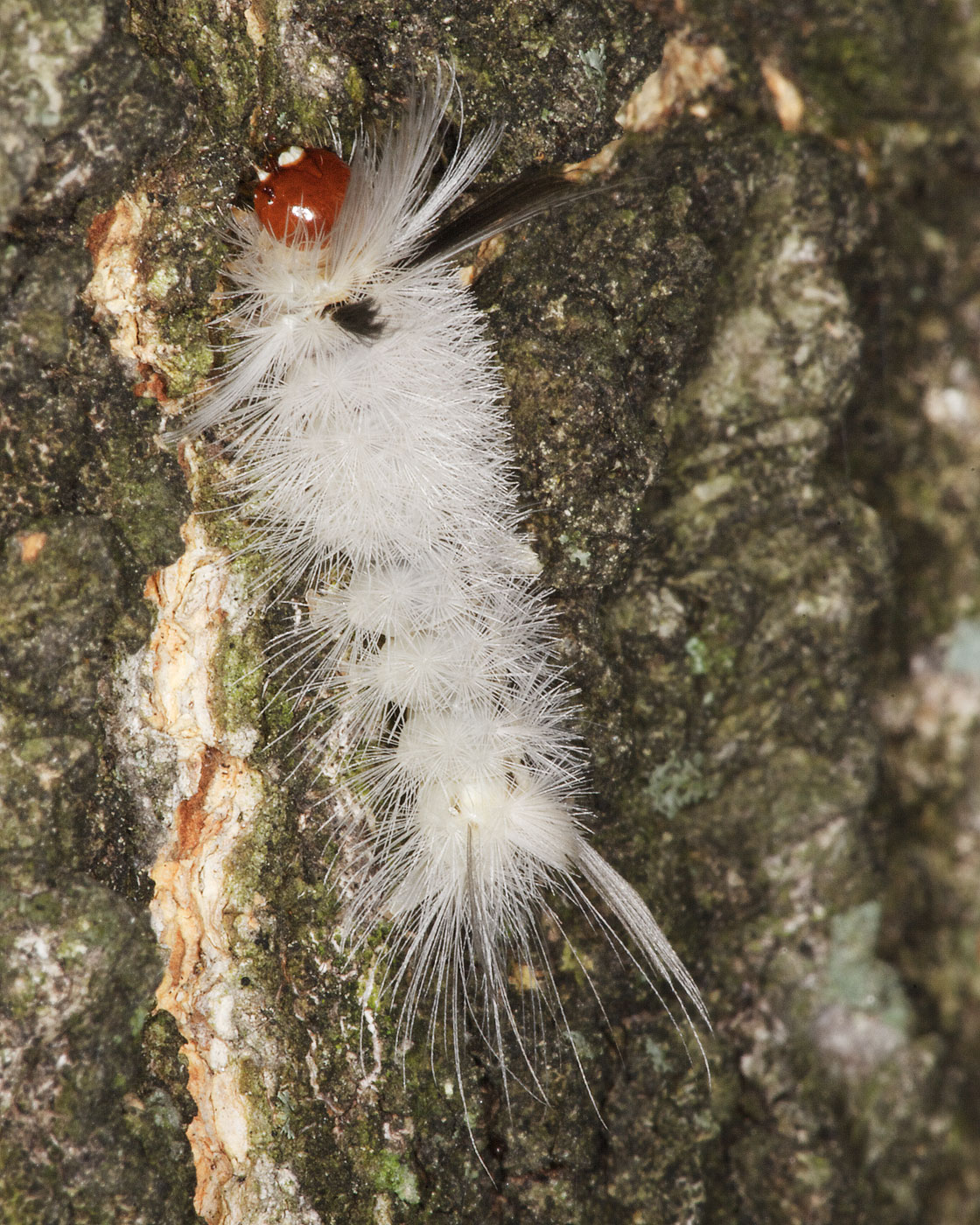| We first encountered this Harvestman when my wife, Leona (also a Homo sapiens), and Rory and I were out under a pin oak tree (Quercus palustris) looking at various arthropods. The pin oak, like practically all trees, is a virtual zoo of arthropod life. The Harvestman apparently fell out of the tree onto Leona’s shoulder. She did not scream. She wanted to scream, but after I explained what a benign and placid individual the Harvestman is (assuming that you're not a small arthropod) Leona and the Harvestman settled down for a picture. |
|





